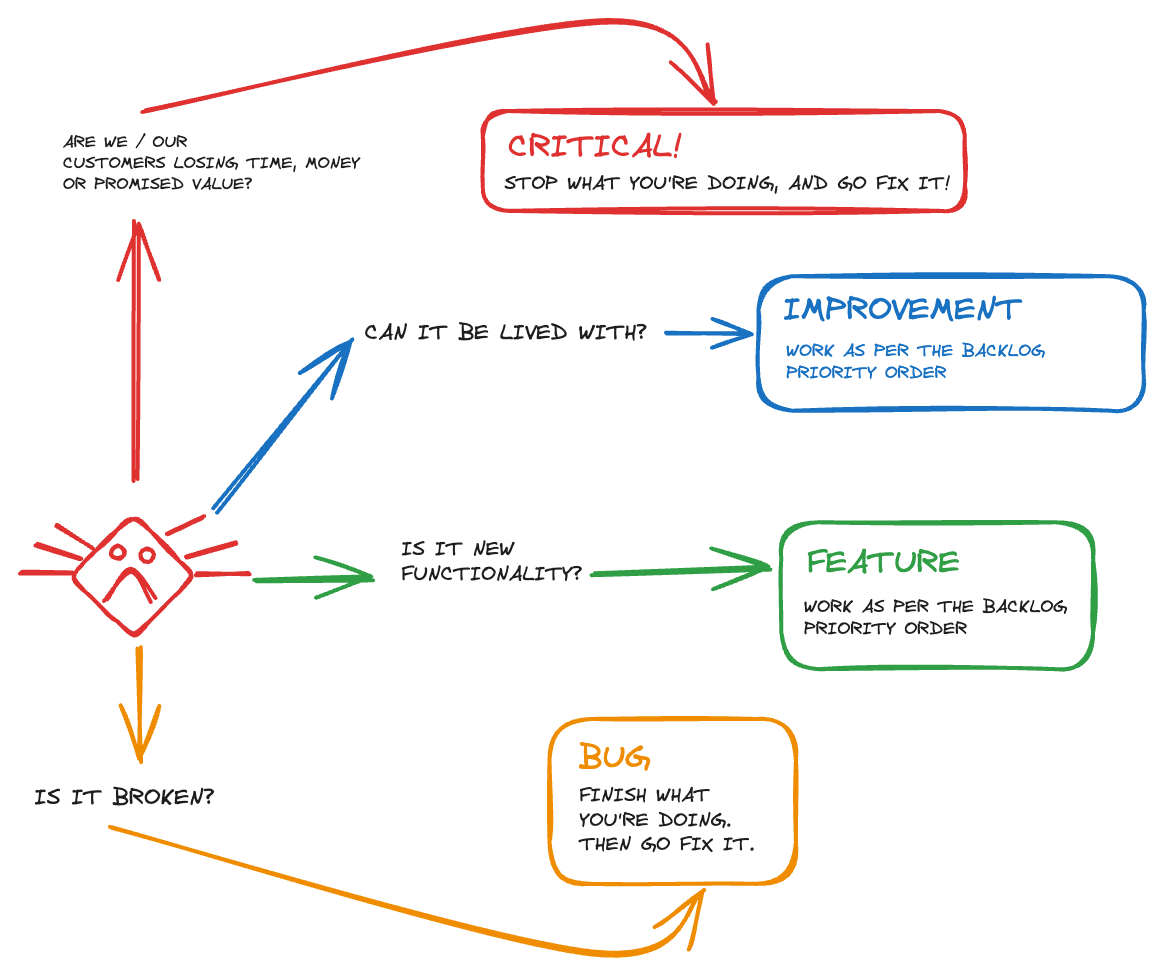Zero Bugs Policy
What a Zero Bug Policy ISN’T
Zero Bugs Policy and Zero Defects Policy may seem like similar, but they are different.
A bug is an error or flaw in a software application that causes it to behave unexpectedly or produce incorrect results. On the other hand, a defect is a broader term that encompasses any deviation from a product’s expected behavior or functionality, including software.
All bugs are defects, but not all defects are bugs it’s important to note that a Zero Defect Policy doesn’t mean your product will never have any defects. It is a** commitment** towards a way of working and an attitude towards the way that you handle defects when they do arise.

What IS a Zero Defect Policy?
Zero Defect Policy is a commitment made by the team. In this context I mean the broad set of people involved in the delivery of the product. This includes the obvious Software and Quality Engineers , but also Product, Designers, Leadership etc. Everyone needs to buy into the commitments otherwise it will fail at the first challenge.
Defects Found Before Production
If we find a defect caused by a change with high severity, we do not ship that change until the defect is resolved.
No if’s, no but’s, no maybes. We never knowingly ship code that introduces a new critical defect.
Defects Found In Production
Defects found in production are having a direct impact on our users. They should be reviewed as soon as practical. For the next part I will assume that the teams already have good practices in place for incident detection. Therefore any other defects reported are not severe enough to trigger an incident.
For the defects found in production, a ticket should be created that can be triaged by the relevant team. The team will apply a ranking to the ticket and priortise its fix as necessary.
Triaging Defects
Teams should review reported defects at a regular cadence. Exactly what cadence will depend on your workflow, but as an example I would expect a team working in scrum on 2 week sprints to triage defects at least once per sprint.
The triaging process should involve a cross discipline group that includes representatives of Product, Software Engineering, Quality, and any other SME’s as appropriate to the defects. It does not require the whole team, but you may want to include them the first few times you go through the process.
Learn more about triaging defects.
Assessing the defect
The pupose of the triaging is to assess:
- User impact – Is it affecting all users or a subset? Is it part of a commonly used area or one that is rarely used?
- Severity – How critical is the defect? Is it preventing a core part of the system from being used, or are there acceptable work arounds?
- Complexity – How difficult will the defect be to resolve? Or what work is requried to understand the root cause before we make an assessment on the resolution?
This will be a discussion across the team members involved in the call. It’s goal is to enable them to come a consensus on a ranking of the defect.
Ranking the defect priority
For ranking we prefer a simple system consisting of 3 options.
- Fix it now – This type of defect provides a degraded user experience. It is only not an incident because there is an acceptable work around, or a delay in restoring access to this feature is an accepted business risk. Ticket included as part of the next sprint.
- Low priority fix – This defect is providing a degraded user experience, but to a limited user base. Alternatively it may be an edge case that is unlikely to affect many users. Kept in a backlog and reviewed for inclusion each sprint. Any ticket not prioritised after 6 sprints to be considered for changing to Won’t fix.
- Won’t fix – These defects won’t be fixed. They may exist in a legacy system that we are no longer maintaining or are in the process of replacing. The defect may be an annoyance but one that does not prevent the user completing the required actions. Or the complexity to resolve the issue is too high and it is an acceptable business risk to not resolve it.
Measuring Success
How we measure success is an interesting point. It comes down to what the purpose of introducing the Zero Defect Policy was. For me this likely boils down the next points:
- Reduce number of open Defect tickets
- Increase the velocity at which we resolve high priority defects
For each of these it would be possible to measure success using our ticketing system (I nearly wrote Jira, but I know not everyone uses it). Reduction in open defect tickets is easy to measure as its simply a count of open tickets. The increase in velocity at which we resolve high priortity defects may be more diffiult to confirm an improvement if we had no way to categorising defects before. With the introduction of categorising defects, we can now confirm we are meeting the commitment we made in our Zero Defect Policy.